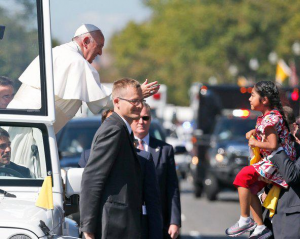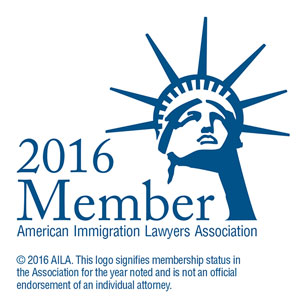Work Authorization for H-4 Spouses: The Experience Thus Far
The U.S. Department of Homeland Security (“DHS)”) announced in February 2015 that beginning May 26, 2015, eligible H-4 spouses of H-1B visa holders could begin applying for employment authorization documents (EADs) from the U.S. Citizenship and Immigration Services (“USCIS”). This change in the regulations was in keeping with President Obama’s efforts to encourage highly skilled workers to stay and set roots in the U.S. Whereas before many H-1B visa workers were often the only ones toiling for their entire families, the new H-4 EADs for their spouses provide the primary H-1B visa holders more financial stability because their spouses can also work and add to the family income, the spouses joining the U.S. workforce create new connections within the community, and economic doors are opened for prosperity, such as purchasing homes and growing families. In the past, the lack of H-4 work authorization has frustrated many spouses who otherwise were qualified and wanted to enter the workforce, but were unable to do so because their H-1B spouses could not apply for green cards due to the crushing backlogs in the EB-2 and EB-3 categories. Even now, the H-4 EADs are not open to every H-4 spouse; it is only a limited group whose H-1Bs spouses were fortunate enough to have an employer sponsor them for a green card.
As a practical matter, the eligibility criteria for the EADs are fairly straightforward: the H-1B visa holder
- Must be the beneficiary of an approved I-140 or
- Was granted an H-1B extension pursuant to sections 106(a) and (b) of the American Competitiveness in the Twenty-first Century Act of 2000 (“AC21”).
In both these cases, a Permanent Labor Certification (“PERM”) was filed on behalf of the H-1B worker.
When applying for the H-4 EAD, applicants must complete the I-765 and indicate the correct category under which the EAD should be issued; here, the correct category is (c)(26). In addition, the applicant must provide evidence of his or her eligibility. This is where things can be confusing. The USCIS has provided a handy FAQ page for guidance. The FAQ provides a list of evidence that must be provided along with the I-765 form, filing fee, and two passport-style photos. First, the applicant must provide evidence of his or her H-4 nonimmigrant status. This can be a copy of the I-797 Approval Notice for the change of status or extension of status for the H-4 visa or a copy of the applicant’s H-4 visa affixed to the passport. Second, the applicant must provide proof of the spousal relationship with the H-1B principal immigrant. This can simply be a marriage certificate. Applicants whose marriage certificates are not in English must provide a certified translation. Third, the applicant must submit evidence of the spouse’s H-1B status, such as copies of the H-1B approval notice, form I-94, receipt number of the approved H-1B filing, or passport plus visas and admission stamps. We also recommend that the applicant show proof that the H-1B has maintained valid H-1B status by providing recent pay stubs.
A fourth set of evidence is required to prove how the H-1B spouse either is the beneficiary of an approved I-140 or has received an H-1B extension pursuant to AC21. To simplify matters, we will first discuss how to demonstrate that an approved I-140 petition exists. The applicant should submit a copy of the I-797 approval notice for the I-140. If the approval notice is not available, one could provide a copy of that petition’s receipt notice and a note explaining why the approval notice cannot be provided.
In cases where the applicant must provide evidence that the H-1B spouse was granted an H-1B extension pursuant to AC21 sections 106(a) and (b), the evidentiary requirements can get more confusing. When the spouse is the beneficiary of a PERM filed 365 days before the end of the spouse’s 6 year maximum stay in H-1B status, the applicant must provide proof of the PERM’s filing, the date of filing, and the date when the spouse’s H-1B status is or was set to expire. Copies of the PERM from the DOL website, along with the travel dates of the spouse while in H-1B status and an explanation of how the PERM was filed more than 365 days before the end of the 6 year maximum, should be sufficient. Where the PERM has been certified and the I-140 timely filed within 6 months of the PERM’s certification date, the applicant should submit copies of the I-140 receipt notice with the certified PERM. If the PERM has been denied, it would still be considered “in process” or pending for AC21 purposes if the employer has filed a Request for Reconsideration with the Certifying Officer or an appeal to the Board of Alien Labor Certification Appeals (“BALCA”). If the applicant does not have access to copies of the PERM form, but the I-140 is pending, he or she can submit the receipt notice for the I-140 (or other evidence of its filing) along with an explanation of how it was filed more than 365 days before the 6-year H-1B limit.
In the event primary evidence is unavailable, USCIS seems to be willing to accept secondary evidence, such as attestations that list information about the I-129 or I-140 petition filings. However, the applicant must first demonstrate why the primary evidence could not be submitted. If the applicant cannot submit proof of eligibility, the EAD application will be in danger of denial.
Other issues that may arise out of the H-4 EAD surround the I-140 approval. The USCIS has expressly written in the FAQ that where H-1B spouse has a revoked I-140 approval, the H-4 EAD will be denied. However, the FAQ mentions revocations by USCIS, which is presumably when USCIS takes action under 8 CFR §205.2 to revoke an I-140 due to fraud or misrepresentation. Practically, however, it matters not whether the revocation was automatic pursuant to 8 CFR §205.1(a)(3)(iii)(C) because a former employer withdrew the I-140, or if the revocation was due to fraud because USCIS will deny the H-4 EAD in these cases, no matter what the root cause of the I-140 revocation. Therefore, the applicant should check the I-140 receipt number on the USCIS case status search function to ensure that the I-140 is still approved. Sometimes the USCIS online case status function is not updated to reflect a revocation; thus, wherever possible, applicants should be more diligent and ask their spouses to find out the status of the I-140 from the prior employers.
Another potential landmine is in cases where the filing is based on a pending I-140 which is then denied before the H-4 EAD application is adjudicated. If this occurs and the spouse’s employer is pursuing a Motion to Reconsider or Reopen the denial, or appeal to the Administrative Appeals Office (AAO), the applicant should submit through a response to a Request for Evidence (which the USCIS should be issuing) that a motion or appeal has been filed, and also submit proof that the PERM was filed 365 days before the H-1B’s six year expiration.
Timing for the H-4 EAD filing is crucial as the expiration of the EAD is based on the spouse’s H-1B expiration, and it behooves the applicant to obtain the longest validity period for the EAD. For example, if the applicant’s spouse’s current H-1B will expire in May 2016 but the spouse is eligible for a 3-year H-1B extension by virtue of an approved I-140 and pursuant to AC21 section 104(c). In this case, it makes more sense to wait until November 2015 to file the EAD application concurrently with the H-1B and H-4 extensions of status so that the EAD would be valid through May 2019, instead of filing the EAD application now, getting an EAD valid through May 2016, and then having to file again in early 2016.
Further, the applicant should be aware that if the EAD application is filed concurrently with an extension of status or change of status application, the underlying extension or change in status application must first be approved before USCIS will adjudicate the EAD application. While at the time of writing this blog the USCIS processing times for change of status and extension of status applications hover around four months, there is no guarantee that processing times will not lengthen. If timing is of the essence, the applicant might consider traveling abroad to undergo consular process for the H-4 visa. Often this is a more speedy method of obtaining an H-4 visa. Applicants should note that they cannot apply for the H-4 EAD until they return to the U.S. in valid H-4 status.
While on the matter of travel, it should be noted that the EAD card cannot be used to travel and it cannot be used to prove valid visa status in the U.S. It simply allows the H-4 visa holder to accept employment. In fact, if the applicant travels while an application to change status to H-4 is pending along with the EAD application, the change of status will be denied and this will likely vitiate the pending application for EAD too. Thus, if the applicant cannot avoid travel during the pendency of the change of status and EAD applications, he or she must instead undergo consular process for the H-4 visa, be admitted on the H-4 visa, and again file the I-765 for the EAD once he or she is back in the U.S. Another note we make is that recipients of H-4 EADs are not limited in the type of employment they can accept. Aside from state licensing requirements for specific occupations (for attorneys, for example), the H-4 visa holders should be able to accept a wide array of employment. It bears repeating that the EAD does not grant separate visa status; only the H-4 visa provides the requisite visa status and the means by which the nonimmigrant is able to remain in the U.S.
H-4 EAD applicants must be diligent in obtaining evidence of their eligibility and be aware of timing concerns. For eligible applicants, this opportunity to obtain authorization for employment is welcome news, as it allows for more than just one family member to work lawfully in the U.S. Still, the H-4 EAD regulation is on shaky ground. It is being challenged in a lawsuit against the Department of Homeland Security (“DHS”) where plaintiffs argue that DHS overstepped its legal power as granted by the Immigration and Nationality Act when it issued the regulations allowing for the H-4 EADs. (Save Jobs USA v. U.S. Dep’t of Homeland Security, case number 1:15-cv-00615, U.S. District Court for the District of Columbia, April 23, 2015). The litigation is ongoing, and it adds to the uncertainty in which many H-1B and H-4 visa holders live in the U.S. Unfortunately, it will have to suffice for the moment because many H-1B visa holders with approved I-140 petitions cannot yet apply for their adjustments of status and the ancillary benefits of an EAD and advance parole. The disappointing actions of the Department of State (“DOS”) and USCIS in issuing a revised October 2015 visa bulletin disallowed potentially tens of thousands of beneficiaries from applying for their adjustments of status (which would have granted the benefit of applying for EADs for their spouses and other derivative beneficiaries). Those who have already waited many years for an opportunity to truly set roots in the U.S. through a green card and work authorization for their families continue to wait. In the meantime they must maintain valid H-1B statuses even though their employers have offered them permanent employment, and in the event they lose H-1B statuses, their H-4 family members will lose their status and they too will have to give up on the dream of becoming permanent members of the American way of life.
(This blog is for informational purposes only, and should not be considered as a substitute for legal advice.)






